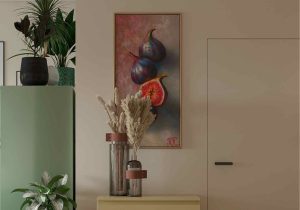
In an era where environmental consciousness is woven into the fabric of our daily lives, the choices we make in furnishing our homes play a pivotal role in shaping a sustainable future. The narrative of eco-friendly living extends beyond the confines of energy-efficient appliances to the heart of our homes—our furniture.
This exploration delves into the realm of Sustainable Furniture: Eco-Friendly Choices for a Greener Home. From the rise of conscious consumerism to the practical integration of sustainable materials, we embark on a journey that not only transforms our living spaces but also aligns with the principles of environmental responsibility.

In the dynamic landscape of modern interior design, the ascent of sustainable furniture mirrors a collective shift towards environmentally conscious living. More than a mere trend, sustainable furniture is a manifestation of a deeper commitment—a commitment to preserving our planet and fostering a sustainable lifestyle. At its core, sustainable furniture embodies the fusion of style and environmental responsibility, challenging traditional manufacturing norms.
The principles underpinning sustainable furniture reach beyond the finished product, encompassing the entire life cycle—from raw material extraction to manufacturing processes and product longevity. Unlike their conventional counterparts, sustainable furnishings prioritise eco-friendly materials, ethical production methods, and a dedication to minimising the ecological impact. This paradigm shift reflects a broader awareness of the environmental repercussions of consumer choices, urging a reconsideration of how we furnish our living spaces.
Understanding the significance of sustainable furniture requires a comparative analysis with conventional alternatives. Traditional furniture production often involves the depletion of non-renewable resources, such as virgin wood, contributing to deforestation and habitat loss.
Furthermore, the use of synthetic finishes and adhesives in conventional furniture can emit volatile organic compounds (VOCs), compromising indoor air quality. Sustainable furniture addresses these concerns by embracing responsibly sourced materials, recycled components, and low VOC finishes, aligning with the ethos of eco-friendly living.
As consumers increasingly prioritise sustainable living, the demand for eco-friendly furniture has surged, prompting manufacturers to adopt greener practices. This transformative shift not only challenges the status quo of the furniture industry but also positions sustainable choices as the cornerstone of conscious consumerism. The rise of sustainable furniture sets the stage for a comprehensive exploration of materials, styles, and the broader impact on creating greener, healthier homes.

The heart of sustainable furniture lies in the conscientious selection of materials. Each choice, from the raw components to the finishing touches, contributes to the environmental impact of the final product. In the realm of sustainable furniture, the emphasis is on choosing materials that are not only aesthetically pleasing but also ethically sourced and environmentally responsible.
At the forefront of sustainable material choices stands the Forest Stewardship Council (FSC) certification—a hallmark of responsible forestry practices. FSC-certified wood ensures that the timber used in furniture production comes from forests that are managed sustainably, promoting biodiversity and safeguarding ecosystems. The use of FSC-certified wood in sustainable furniture not only curtails deforestation but also supports communities dependent on forest resources.
Bamboo, a rapidly renewable resource, has also gained prominence in sustainable furniture design. Known for its fast growth and minimal environmental impact, bamboo is a versatile material that can be fashioned into various furniture pieces. Its regenerative nature and minimal carbon footprint make bamboo an eco-friendly alternative to traditional hardwoods, offering strength and durability without compromising environmental integrity.
Embracing the principles of the circular economy, sustainable furniture often incorporates recycled and upcycled materials. From reclaimed wood and metal to repurposed textiles, these materials not only divert waste from landfills but also infuse each piece with a unique character. The beauty of recycled and upcycled furniture lies in its ability to tell a story—the story of its previous life and the sustainable choices made in its creation.
The final touches in furniture production often involve finishes and adhesives that can release harmful volatile organic compounds (VOCs) into the air. Sustainable furniture priorities low VOC finishes, ensuring that the indoor air quality remains uncompromised. This not only contributes to a healthier living environment but also aligns with the broader commitment to minimising the carbon footprint associated with furniture production.
The second facet of our exploration into sustainable furniture underscores the critical role that material choices play in shaping eco-friendly living spaces. From certified wood to recycled components, sustainable materials are the building blocks of a greener home. As we delve further, we’ll explore how these materials manifest in the diverse styles of eco-friendly furniture, creating spaces that are not only aesthetically pleasing but also environmentally responsible.

The marriage of sustainability and style comes to life as we explore the diverse array of eco-friendly furniture styles designed for every room in your home. Beyond the conscientious selection of materials, sustainable furniture extends its influence into the aesthetics and functionality of living spaces. From the cozy ambiance of the living room to the serene retreat of the bedroom, each room presents an opportunity to integrate sustainable choices seamlessly.
In the heart of the home, the living room serves as a canvas for sustainable furniture to make a bold statement. Imagine plush sofas crafted from FSC-certified wood, adorned with organic cotton upholstery. Coffee tables made from reclaimed wood or repurposed materials become conversation starters, showcasing the beauty of sustainability. Incorporating pieces that echo the natural world not only enhances the visual appeal but also establishes a connection between your living space and the environment.
The bedroom, a sanctuary of rest and rejuvenation, is transformed by sustainable furniture into a haven of comfort and conscience. Bed frames crafted from bamboo or reclaimed wood create a serene focal point, while organic mattresses and bedding contribute to a healthier sleep environment. Sustainable dressers and nightstands, perhaps repurposed from salvaged materials, bring a touch of eco-conscious elegance to the room. The bedroom becomes a retreat where style seamlessly aligns with sustainability, fostering a sense of well-being.
The dining room, a gathering place for shared meals and conversations, invites sustainable choices to the table. FSC-certified wooden dining sets, paired with chairs featuring eco-friendly upholstery, set the stage for sustainable dining experiences. Consider the charm of a reclaimed wood dining table, where each imperfection tells a story of a previous life. The eco-friendly dining room is a space where conscious choices extend beyond the plate, creating an atmosphere that nourishes both the body and the planet.
As we extend our living spaces outdoors, sustainable furniture continues to play a vital role in shaping eco-friendly landscapes. Outdoor furniture crafted from recycled plastic, reclaimed wood, or responsibly sourced materials ensures that your connection with nature is harmonious. Imagine lounging on a patio chair made from upcycled materials, surrounded by planters crafted from recycled containers. Sustainable outdoor furniture not only withstands the elements but also contributes to the overall well-being of the environment.
Exploring eco-friendly furniture styles for every room underscores the versatility and adaptability of sustainable choices. From shared spaces to personal retreats, sustainable furniture seamlessly integrates into various design aesthetics, proving that conscious living can coexist with sophisticated style. As we delve deeper, we’ll explore how the integration of indoor plants enhances the synergy between sustainable furniture and the natural world, creating spaces that are not only beautiful but also environmentally responsible.

Indoor plants, with their lush foliage and air-purifying qualities, are a natural companion to sustainable furniture in creating eco-friendly home interiors. Beyond their aesthetic appeal, indoor plants contribute to a healthier living environment by filtering out pollutants and promoting better air quality.
From classic choices like the spider plant and peace lily to more exotic options such as the snake plant or ZZ plant, integrating indoor plants into your home decor adds a touch of nature that complements the ethos of sustainable living.
Understanding the specific plants suitable for home interiors is a crucial aspect of creating a green haven. Low-maintenance options like succulents and pothos thrive in various conditions, making them ideal for beginners. For those seeking a touch of the tropics, the vibrant foliage of the monstera or the elegance of a fiddle leaf fig can transform a space into a lush oasis.
The synergy between sustainable furniture and indoor plants goes beyond visual aesthetics; it establishes a connection with nature within the confines of your home, fostering a sense of well-being and tranquility.
In the symphony of sustainable living, where conscious choices resonate with style, the integration of eco-friendly furniture and indoor plants emerges as a powerful crescendo. From the responsible selection of materials to the diverse styles that grace every room, the journey into sustainable living is not only an aesthetic exploration but a commitment to environmental stewardship.
As we tread the path where design meets sustainability, we discover that a greener home is not just a concept but a living reality—one where each piece of furniture and every leafy companion tells a story of conscious choices. The harmonious marriage of sustainable furniture and indoor plants transforms living spaces into sanctuaries that not only reflect personal style but also contribute to a healthier, more sustainable world.
